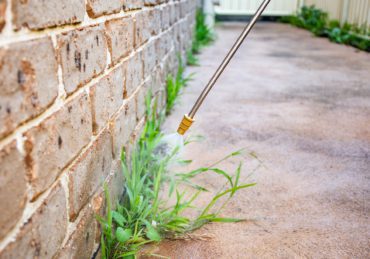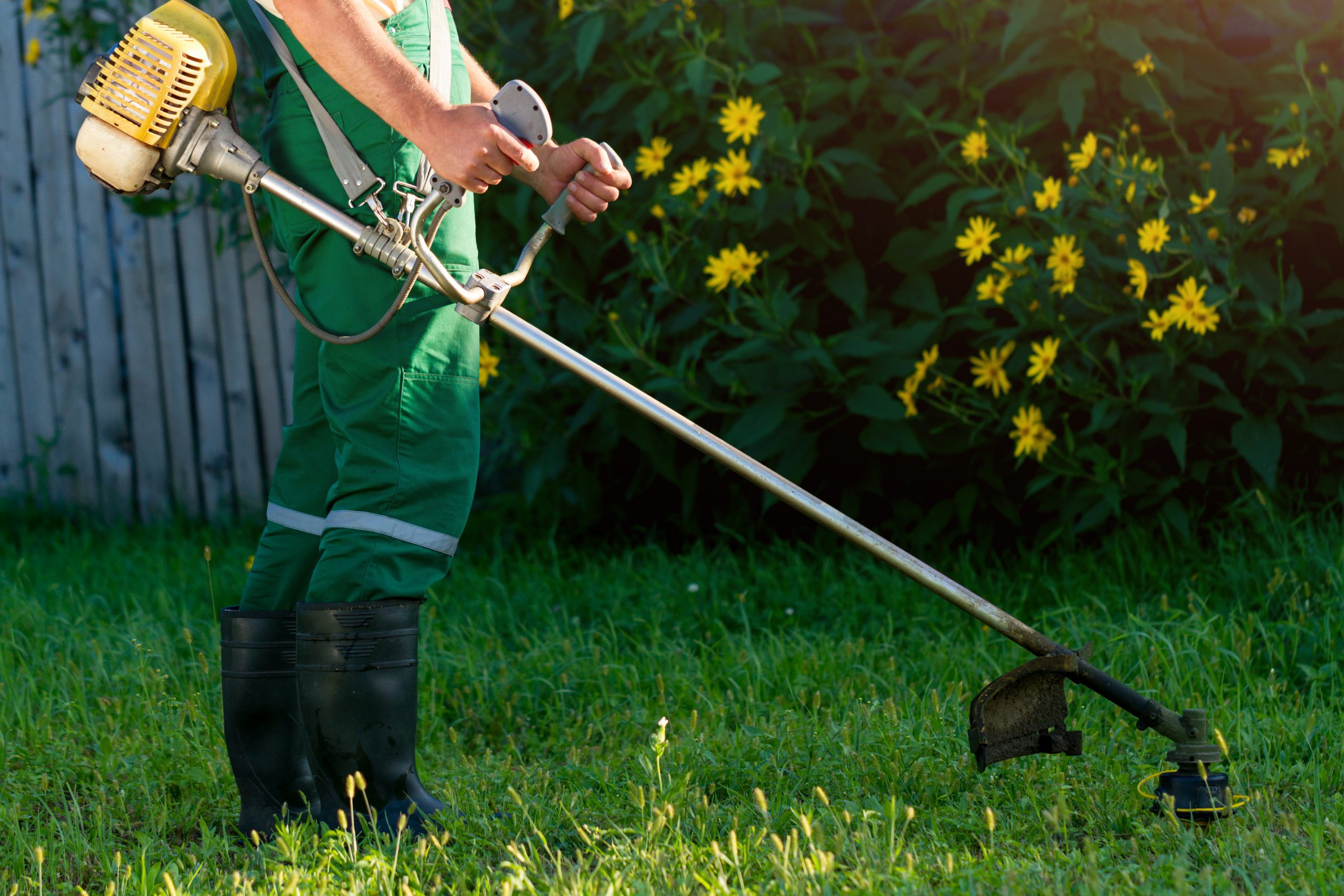The decision to bag or mulch grass clippings primarily depends on specific lawn conditions and environmental goals. Mulching enhances soil health by recycling nutrients, reducing the need for fertilizers, and conserving moisture, but requires well-maintained mowing practices and may spread diseases if not managed properly. Conversely, bagging guarantees a flawless lawn appearance and facilitates disease control but increases maintenance efforts and disposal issues. Ideal mowing conditions and lawn health goals should dictate your choice. Understanding the nuances between these methods can notably impact your lawn care strategy, offering insights into whether environmental sustainability or ideal lawn aesthetics is your priority.
Mulch or Bag Grass Clippings? The Core Debate
The core debate between mulching and bagging grass clippings centers on their differing impacts on lawn health, maintenance efficiency, and environmental sustainability.
Mulching involves allowing clippings to decompose on the lawn, thereby reintegrating essential nutrients and diminishing the necessity for supplemental fertilizers.
In contrast, bagging removes clippings for disposal, which can enhance lawn aesthetics and curb disease spread but also contributes to increased waste and higher maintenance demands.
What Is Mulching and How Does It Work?
Mulching, a strategic lawn care technique, involves finely chopping grass clippings and redistributing them back onto the turf to decompose naturally.
This process enriches the soil with nitrogen, phosphorus, and potassium, fulfilling up to one-third of a lawn’s annual nutrient needs.
Furthermore, mulching enhances soil moisture retention and reduces reliance on chemical fertilizers, promoting a sustainable and efficient approach to fostering a healthy lawn ecosystem.
What Happens When You Bag Grass Clippings?
Opting to bag grass clippings can offer a visually immaculate lawn and act as a preventive measure against thatch accumulation.
This method reduces disease spread by eliminating potentially infected material, although it demands extra labor and time.
While bagging grass clippings enhances short-term aesthetics, it sacrifices the long-term nutrient recycling benefits that mulching your grass clippings provides, such as enriching soil health and minimizing landfill waste.
Pros of Mulching Grass Clippings
Mulching grass clippings provides a substantial nutrient boost to the soil by rapidly decomposing and releasing essential elements like nitrogen, phosphorus, and potassium, which can fulfill up to one-third of a lawn’s annual nutrient needs.
This practice not only saves time and money by reducing the necessity for supplemental fertilizers and frequent bag emptying, but it also mitigates environmental impact by decreasing landfill waste and conserving water through enhanced soil moisture retention.
Nutrient Boost for Soil
Applying the practice of mulching grass clippings can greatly enhance soil nutrient levels, offering substantial agronomic benefits.
Mulch returns essential nutrients, such as nitrogen, phosphorus, and potassium, effectively fertilizing the lawn.
Consider these advantages:
- Nutrient Enrichment: Clippings fulfill up to one-third of annual nutrient needs.
- Soil Structure Improvement: Enhances root health and soil quality.
- Moisture Retention: Reduces watering demands, supporting sustainable lawn ecosystems.
Saves Time and Money
In conjunction with enhancing soil nutrients, the practice of mulching grass clippings offers significant time and financial savings for homeowners.
Mulching reduces yard work by 30%-38%, negating the need for bagging and disposal. It provides up to 25% of nutrient requirements, decreasing fertilizer costs.
Furthermore, mulching enhances soil moisture retention, potentially lowering irrigation expenses, making it a cost-effective, efficient lawn care strategy.
Environmental Impact
While often overlooked, the environmental benefits of mulching grass clippings are substantial and multifaceted.
By integrating clippings back into the soil, one can:
- Reduce Landfill Waste: Yard debris contributes to nearly 20% of landfill content.
- Conserve Resources: Mulching can fulfill up to 25% of a lawn’s nutrient needs.
- Enhance Soil Health: Decomposed clippings enrich the soil with essential nutrients.
Mulching fosters sustainable lawn care.
Cons of Mulching Grass Clippings
Mulching grass clippings, while environmentally beneficial, may not be suitable for wet or overgrown lawns, where clippings can form unsightly clumps and impede lawn health.
In addition, mulching can inadvertently facilitate the spread of lawn diseases if infected clippings are left on the surface, posing a risk to plant health.
Regular maintenance and appropriate mowing practices are essential to mitigate these potential downsides and guarantee ideal lawn conditions.
Not Ideal for Wet or Overgrown Lawns
Frequently, mulching grass clippings is not recommended for lawns that are wet or overgrown due to the challenges it presents.
Wet grass can form clumps, impeding even distribution and decomposition. Overgrown lawns complicate effective mulching, necessitating more frequent mowing.
To optimize mulching outcomes:
- Avoid wet conditions: Prevent clumping with dry grass.
- Maintain shorter grass: Ideal height is 3 inches or less.
- Consider bagging: For excessively long grass.
Potential Spread of Lawn Disease
Addressing challenges with mulching, especially in wet or overgrown conditions, leads to another critical consideration: the potential spread of lawn diseases through grass clippings.
Mulching the grass clippings can disseminate pathogens if the lawn is infected. To mitigate this risk, consider bagging your grass clippings when disease is evident.
Regular monitoring and proper mowing practices are essential to prevent fungal proliferation and guarantee a healthy lawn environment.
Pros of Bagging Your Grass Clippings
Bagging grass clippings offers distinct benefits, particularly in maintaining an immaculate lawn appearance and mitigating the propagation of weeds and pests.
By collecting and removing clippings, homeowners can achieve a cleaner and more aesthetically pleasing lawn surface, free from unsightly debris.
Moreover, this practice helps inhibit the spread of weed seeds and pests, hence contributing to a healthier and more robust turf ecosystem.
Cleaner Lawn Appearance
Creating a flawless lawn appearance involves strategic grass management, and opting to bag grass clippings can greatly enhance curb appeal.
Key benefits include:
- Neatness: Bagging results in a cleaner lawn appearance, free from unsightly clippings.
- Reduced Indoor Mess: Minimizes clippings and dirt tracked indoors.
- Disease Monitoring: Allows for identification of diseased areas, facilitating prompt treatment.
This practice is essential for maintaining a property with aesthetic standards.
Reduces Spread of Weeds and Pests
Opt for bagging grass clippings to effectively mitigate the spread of weeds and pests in your lawn.
By removing clippings, you eliminate habitats for pests and prevent weed seed dispersion. Furthermore, bagging reduces the risk of fungal growth by avoiding clump formation.
Regular bagging minimizes thatch buildup, which can harbor pests and diseases, ensuring a healthier, more resilient lawn.
Cons of Bagging Grass Clippings
Bagging grass clippings introduces several disadvantages, particularly increased labor and logistical challenges.
The process demands additional time and effort due to frequent interruptions to empty collection bags, complicating otherwise straightforward mowing routines.
Additionally, the disposal of these clippings exacerbates municipal waste management issues, as they contribute substantially to landfill volume and incur increased disposal costs.
Increased Yard Work
While maintaining an immaculate lawn might tempt homeowners to collect grass clippings, this decision invariably increases yard work.
Bagging and mulching present contrasting impacts on lawn care company services. Consider these factors:
- Time Efficiency: Bagging requires frequent stops to empty the bag, extending maintenance by 30%-38%.
- Physical Labor: Transporting clippings demands additional effort.
- Peak Growth Demands: Frequent bagging is necessary, intensifying workload.
Disposal Challenges
Given the practical and environmental implications, the disposal of bagged grass clippings poses notable challenges in lawn care management.
The process demands increased labor, time, and financial resources due to frequent emptying and disposal, exacerbating landfill waste issues.
Instead, integrating clippings into a compost pile enhances sustainable practices by recycling nutrients and reducing reliance on external waste services, fostering a more eco-friendly approach to lawn care.
When Should You Bag vs. Mulch Grass?
Determining whether to bag or mulch grass clippings hinges on specific lawn conditions and maintenance goals.
Bagging is advisable during peak growth periods when mowing tall grass or managing a lawn with disease issues to prevent clumping and pathogen spread.
Conversely, mulching is preferable during regular mowing routines in the spring and summer, as it efficiently recycles nutrients and enhances soil health, reducing the need for additional fertilizers.
Best Times to Bag Grass Clippings
Opting to bag grass clippings is essential under specific conditions that impact lawn health and maintenance efficiency.
Consider bagging when:
- Mowing tall grass to prevent clippings from smothering the lawn and promoting fungal growth.
- Addressing lawn disease or pest infestations to hinder pathogen spread.
- Preparing the lawn for overseeding, ensuring a clean slate for new grass establishment.
Best Times to Mulch Grass Clippings
During the peak growing season, mulching grass clippings emerges as a highly practical and environmentally friendly method of lawn care.
The benefits of mulching are maximized when grass is actively growing, returning essential nutrients to the soil and reducing fertilizer dependence.
While bagging is best after mowing tall grass or when leaves are present, mulching during rapid growth periods minimizes cleanup and fosters sustainable lawn health.
Common Myths About Mulching & Bagging Grass
Although widely debated among homeowners and lawn care professionals, the decision to mulch or bag grass clippings is often clouded by several misconceptions.
Consider the following myths:
- Mulching clippings leads to excessive thatch buildup.
- You must bag your grass for a tidy lawn appearance.
- Bagging is essential for lawn health.
In reality, mulching grass clippings contributes to nutrient-rich soil without causing thatch.
Need Help Deciding? Try Lawnguru’s Lawn Care Services!
Are you uncertain about whether to bag or mulch your grass clippings?
Lawnguru’s personalized lawn care services can guide you in making an informed decision based on your lawn’s specific conditions and your aesthetic preferences.
Our expert team monitors your lawn for pest and disease issues, ensuring peak health and sustainability.
For professional advice and flexible scheduling, contact us to enhance your lawn care routine efficiently.




